Every garden needs exclamation points! In a venue that tends to lay horizontally as we strive to clothe the earth and offset anchored homes, elements that stretch toward the sky are literally in high demand. And that’s where hornbeams come in handy. Although not all hornbeams are straight shooters, they have that potential. And currently, there’s a lot going on in the Carpinus genus. The long, lean, columnar European hornbeam, Carpinus betulus ‘Fastigiata’, employed at the FLOWER Atlanta Showhouse is the darling of anyone who needs tall handsome drama in tree form, but it isn’t the only game in town.

A pair of European hornbeams, Carpinus betulus ‘Fastigiata’ punctuate the garden at the back of the FLOWER Magazine Atlanta Showhouse.
John Howard obviously knew: Hornbeams are worth watching right now, and for good reason. These members of the birch family are workhorses verging on war horses that fill some challenging job descriptions with finesse. Nowadays we’re looking for trees that are far more than just “strong silent types.” Simpatico with either full sun, partial sun, or moderate shade in damp or well-drained soils, hornbeams have attributes that make them valuable players throughout the year, starting with the stripped down season. A bare naked hornbeam is almost as alluring as the fully clothed version clad in the tidy pleated leaves typical of the genus.
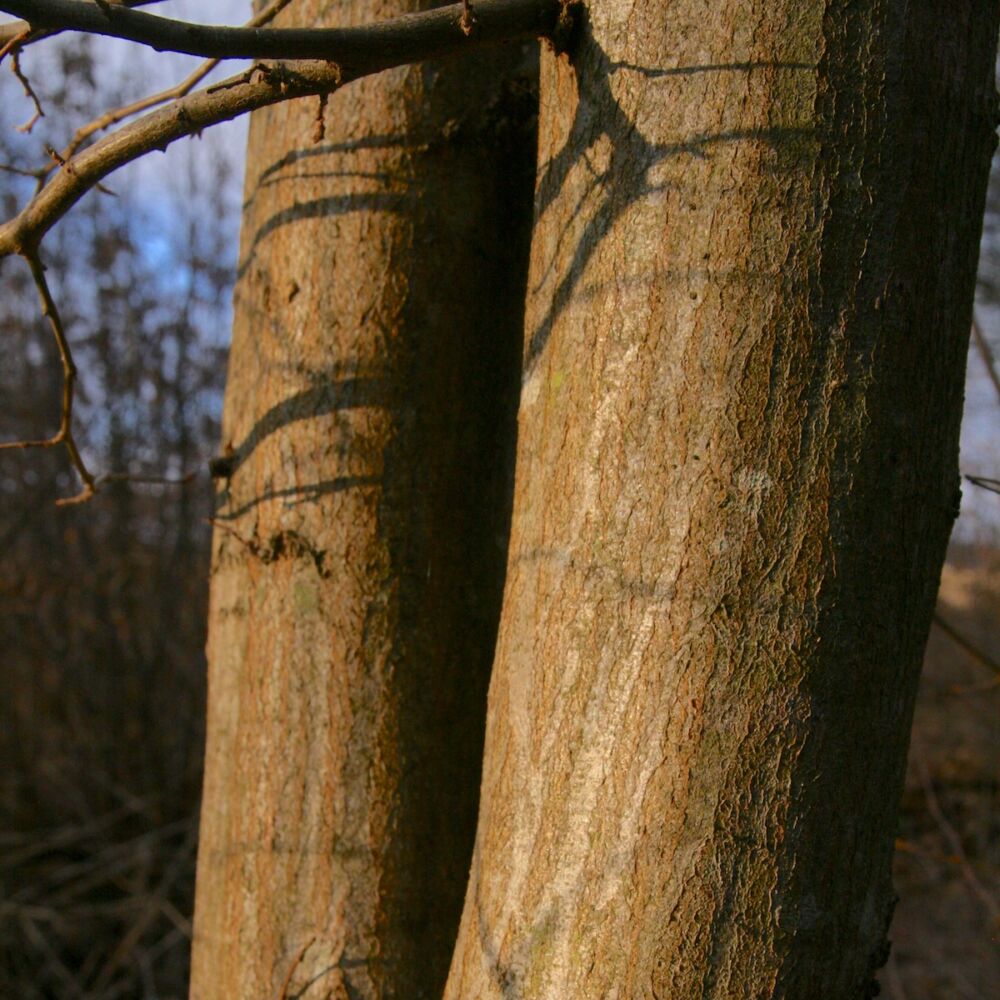
Common Name: Musclewood
They don’t call hornbeams musclewood for nothing. On a mature tree, the flanged bark features grooved vertical rivulets that could easily inspire sculptors and might make a masseuse yearn to engage. Not only is the bark sinuous, it is also rock solid. Carpinus betulus is reputedly the hardest wood of any European tree. The Romans purportedly used European hornbeam for chariot-making and in the manufacture of yokes for their oxen. That said, hornbeam wood can rot when sitting in moisture—which explains why the wood was used for tool handles rather than parts coming into constant contact with wet.
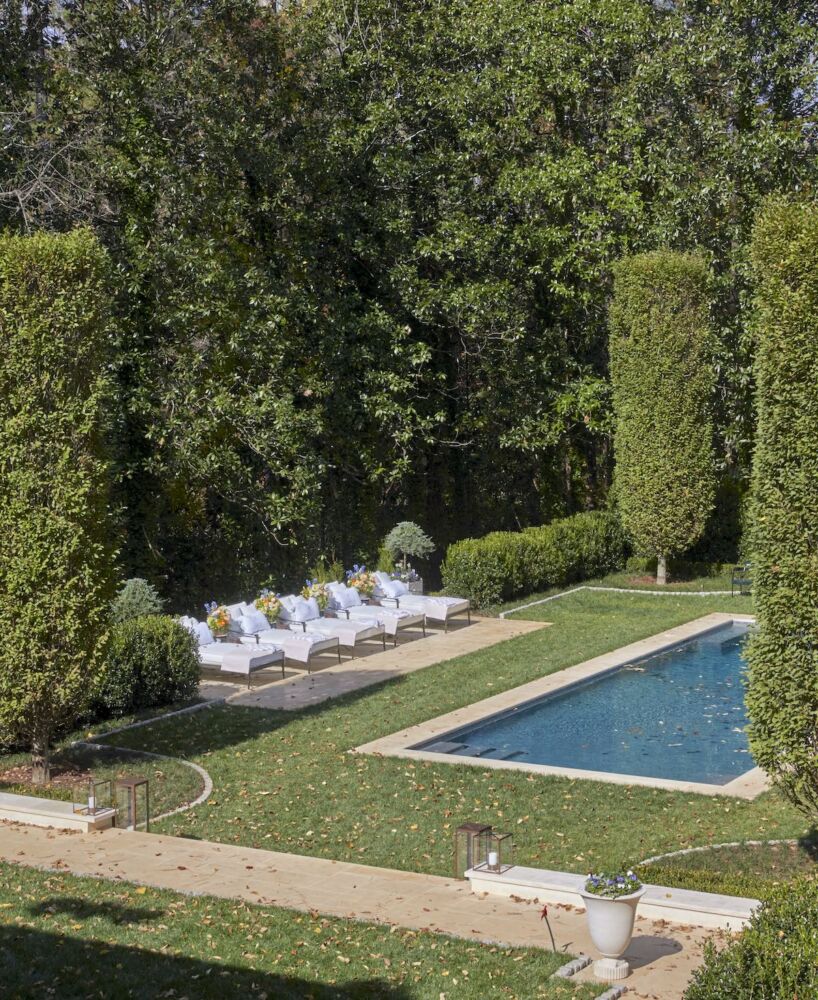
Hornbeams In the Landscape
From a planting perspective, tree experts have a lot of good things to say about hornbeams in the landscape. Horticulturalist and author of The Tree Book, Michael Dirr, sings the plant’s praises—and he certainly isn’t a pushover for any old woody tree. Historically, European hornbeam has led the pack for its positive attributes. Beyond being trouble-free, the tree lends itself to many job descriptions with the density of its branch canopy making it versatile and luring the nursery trade to craft different spins on the species.
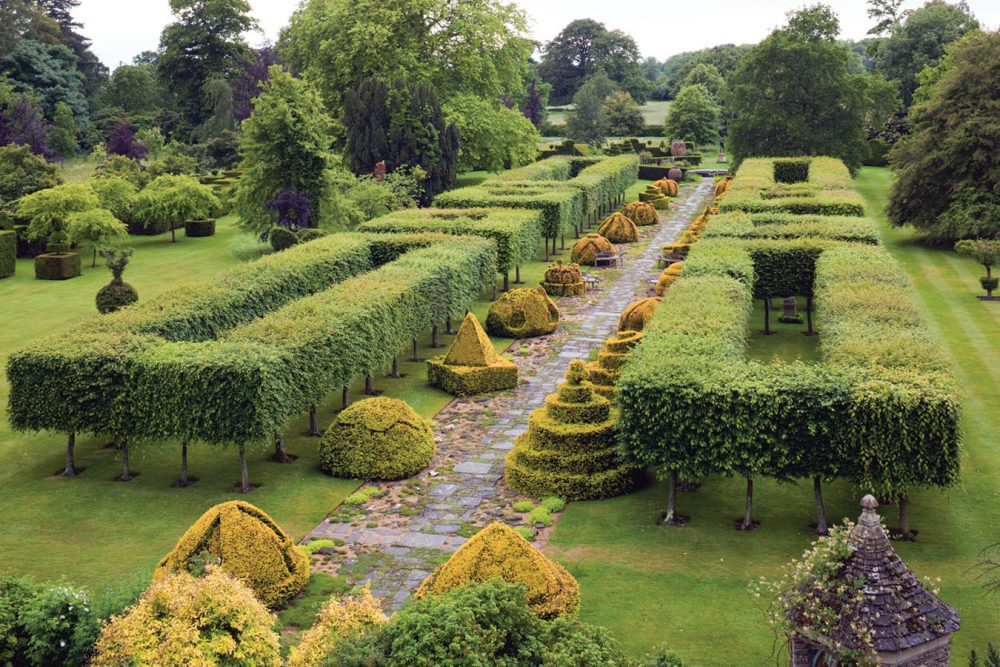
The Thyme Walk in England’s Highgrove Garden features a fanciful procession of clipped golden yews, and block-like pleached hornbeams that line the path, with scented thyme mounds underfoot. Photo by GAP photos/Highgrove/A. Lawson
Hornbeams readily allow themselves to be sheared into shape, and that’s a big plus. But that said, cultivars are bred to naturally assume certain forms. Carpinus betulus ‘Fastigiata’ is the superstar that literally stands head and shoulders above its brethren. If you need a rocket straight specimen stretching toward the heavens, ‘Fastigiata’ is the time-honored version for the job. Plus, hornbeams possess another deeply appreciated virtue—their foliage and wood is not among the first targets for deer to munch. In fact, those browsing bottomless-pits-with-antlers generally leave it alone—making it far preferable to pencil-thin arborvitaes, etc. Granted, the columnar European hornbeam isn’t as fleet as Lombardy poplar (Populus nigra ‘Italica’) in growth habit. But then, hornbeams don’t suffer from the disease and other issues haunting those poplars that rapidly shoot toward the sky.

A hornbeam tunnel (a favorite Arthur Shackleton design feature) and sweet gum seedpod sculptures at Ireland’s Dromoland Castle. Photo by Hugo Shackleton
For use as an exclamation point, Carpinus betulus ‘Fastigiata’ is superb. However, standing 30-40 feet tall at maturity and eventually spreading 20-30 feet wide, it is a stately statement. Slightly slimmer but a lofty 30 feet at maturity is ‘Frans Fontaine’. And for those who want something scaled down, Carpinus betulus ‘Columnaris’ is an equally tall but slimmer spin on the European hornbeam. Its branches are reputed to be so tightly spaced that it forms a visual screen when leafless over the winter. And that’s another use for this tree—it can form a tidy hedge resembling a beech barricade. Also available in the European hornbeam stable is ‘Globosa’ with rounded balls on slender stems (reminiscent of lollipops) and ‘Vienna Weeping’ that will slowly gain a cascading habit.
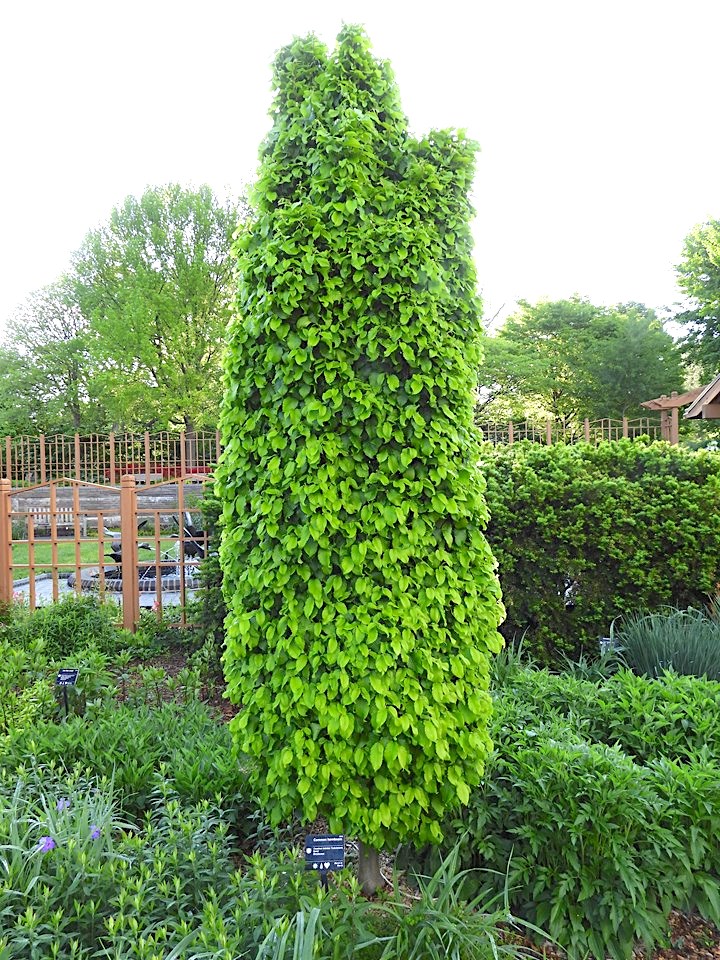
Carpinus betulus ‘Columnaris Nana,’ a dwarf columnar hornbeam that tops out about 8 feet tall. Photo courtesy of Missouri Botanical Garden
For European hornbeam, there is the potential for off-season splendor. The leaves will blanch light wheat to brighter yellow in autumn before drifting to the ground (although some specimens hold their foliage until spring). Individuals can be brilliant in color, but great golden hues are not the norm. As a result, increasing the color in hornbeams became the Holy Grail for at least one plant breeder.
American Hornbeam
Although purportedly hardy to Zone 4, in reality, European hornbeam apparently cannot reliably survive in Wisconsin, and that issue actually played in our favor because it prompted Mike Yanny of Johnson’s Nursery in Menomonee Falls, Wisconsin to explore our native musclewood, Carpinus caroliniana. Previously overlooked, C. caroliniana has two traits that attracted the Wisconsin nurseryman—it has reliable winter hardiness and superior autumn color. According to Ben French, vice president of product development at Johnson’s Nursery, the native musclewood also shares many other traits that endear hornbeams to homeowners—like a compact growth habit that makes the tree attractive to small property homeowners and the hornbeam’s usefulness as a street tree where winter salt applications are not an issue. “It’s one of my favorite plants,” French admits—which is quite an endorsement, given the scope of his exposure to various worthy trees and shrubs. “It is mess-free, beautiful, and supports the local food web.” Truly, the American hornbeam serves an impressive range of native wildlife. It is the larval host to the Eastern tiger swallowtail, striped hairstreak, white admiral, and red-spotted purple butterflies. Wildlife including ruffed grouse, pheasant, wild turkeys, northern cardinals, and squirrels enjoy its catkins in spring and/or nutlets in autumn. Because it shares a love for shaded woods, stream sides, and riverbanks, beavers benefit from the tree. Deer browse on the catkins but tend to spare the foliage and branches.
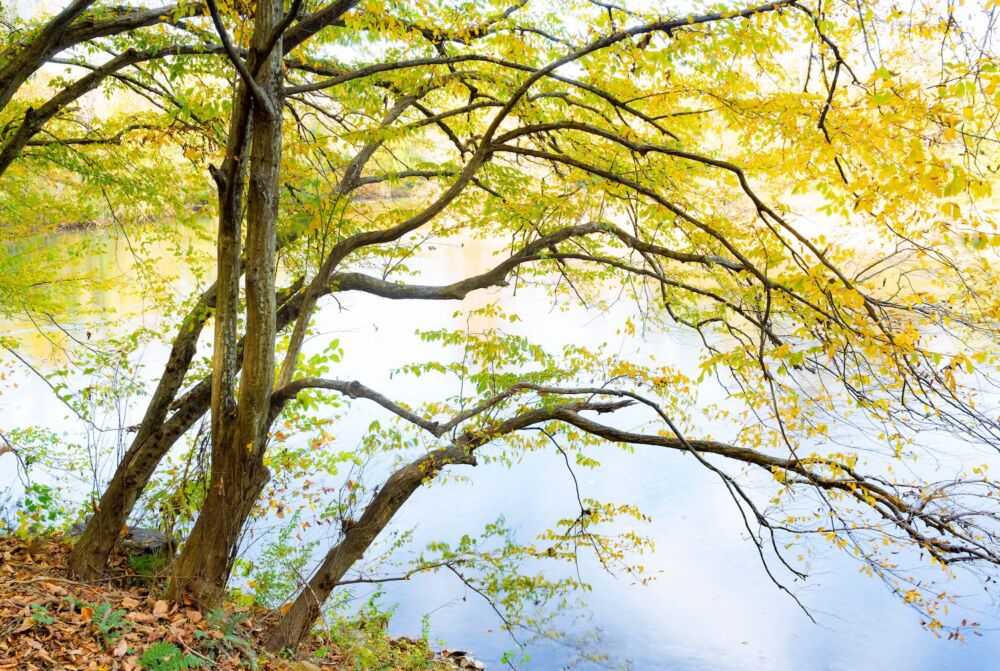
Hornbeam Fall Color
All these attributes also prompted Yanny to launch an intensive breeding program to play up the overlooked native hornbeam’s traits, with a special focus on the autumn color. The result is a slew of introductions by Johnson’s Nursery boasting an impressive raging reddish-orange fall color. We now have the ‘Wisconsin Red’ strain of musclewood with selections like ‘Fireball’ and ‘Fire King’ as a result of the breeding program. Most noteworthy for fans of the fastigiate European hornbeam, Johnson’s Nursery introduced ‘Firespire’ (alias ‘J.N. Upright’) in 1993. According to French, ‘Firespire’ is a slow growing version of the columnar European hornbeam topping out at about half the height (a 10 year-old specimen tends to stand 7 feet tall with a 3.5 ft width). It features an increased hardiness (Zone 3) and extremely impressive autumn color. We’re talking a brew of fire engine red and pumpkin orange. Plus, it holds its branch skirt up a little higher than Carpinus betulus ‘Fastigiata’, so you can get a nice view of the muscular stem. And these nativars are perfectly capable of forming an awesome hedge, “if you are patient,” according to Ben French.
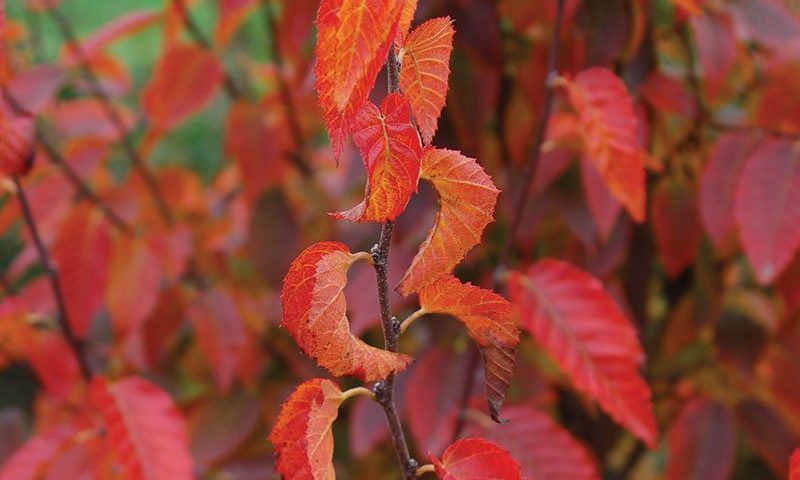
Japanese and Korean Hornbeams
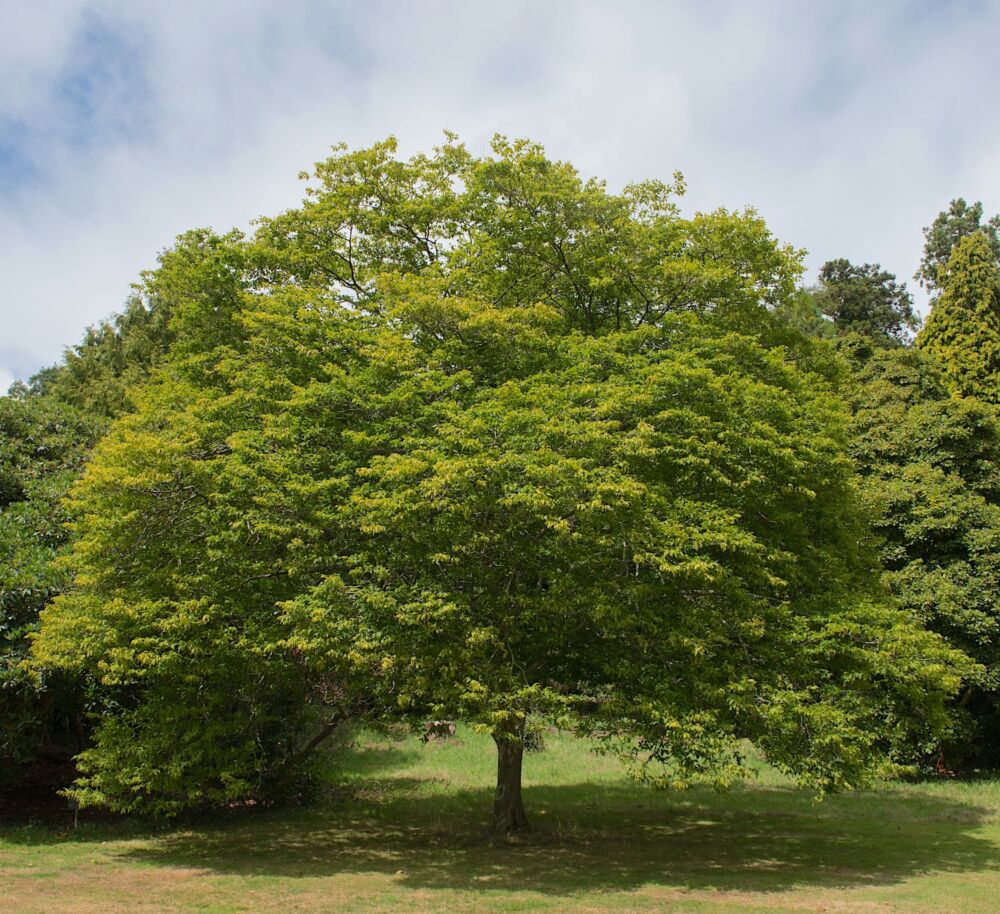
Although the European hornbeam and the native hornbeam can be found at nurseries, other players are out there for gardeners willing to search. If you want something that is physically the polar opposite of ‘Fastigiata’ and its counterparts, explore Carpinus coreana (alias C. turczaninovii), hailing from Korea. Sought for bonsai, it’s a cutie with lateral branches jutting from gnarly, buff-barked stems. More suitable for your outdoor landscape and hardy to Zone 6, C. coreana ‘Model Rocket’ is a newbie with a columnar habit standing about 20 feet tall. For foliar diversity, C. coreana ‘Yokoi Splash’ displays mottled foliage. Also hitting the limelight is Carpinus japonica, the Japanese hornbeam, a handsome compact tree wonderfully suitable for the home landscape. Hardy to Zone 5 with long, lean, corduroy-pleated leaves and hop-like seedpods, it’s a strong contender for suburbia’s next darling. Broken Arrow Nursery lists a C. japonica introduction dubbed ‘Silver Lace’ with handsome, deeply serrated leaves to further tantalize collectors of rare trees. Further species will probably also hit the limelight with time.
Clearly, there’s a lot going on with hornbeams now and in the future. If you thought that musclewoods were just strong, silent types, think again. These trees have substance.
By Tovah Martin
